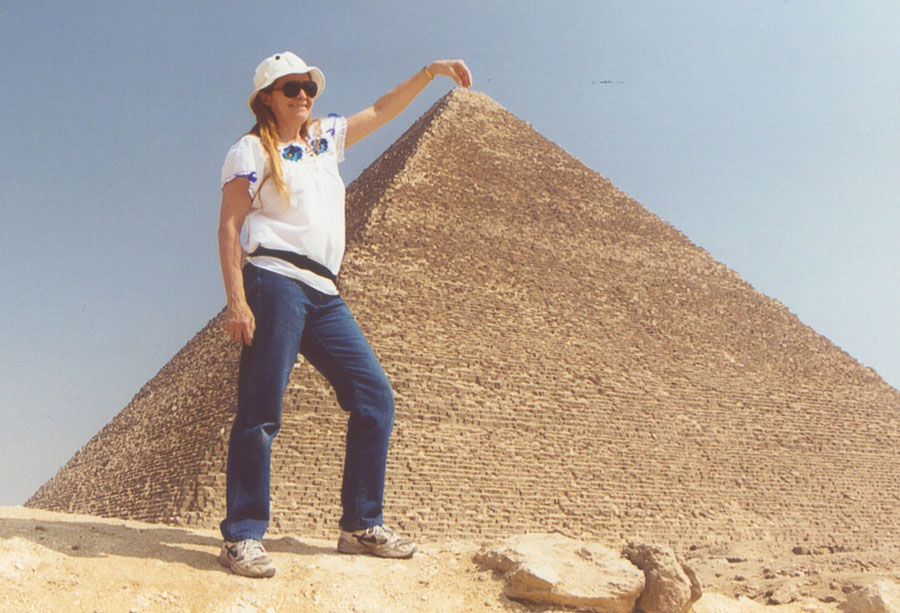Sponsored by: Available
The Ga-Ge Rich Apex Mine, Utah - A Tsumeb, Namibia Analogue
by
Dr. Karen Wenrich, Consulting Geologist
Abstract: The Apex Mine is located on the east flank of the Beaver Dam Mountains, in SW Utah. It was mined intermittently between 1884 and 1962 for Cu, Pb, Ag, and minor Zn. In addition, Ga and Ge were recovered during 1985-1986.
The ore consisted of limonitic breccia derived from silty and sandy carbonate rocks of the Pennsylvanian Callville Limestone and overlying Pakoon Dolomite. This breccia collapsed into the Mississippian Redwall Limestone, a part of the thick Paleozoic carbonate sequence in the area. The breccia was previously interpreted as the result of faulting. This study shows that it is a nontectonic, polymictic breccia that formed by collapse of overlying rock, as high up in the section as the Permian Queantoweap Sandstone, into solution caverns. Both brecciation and mineralization predate all faulting in the area. Similarities in mineralogy, geochemistry, and structure demonstrate that this deposit is an analogue of the Tsumeb Cu-Ge-Ga Mine. The Tsumeb ore deposit contains both oxidized and primary ore, whereas the Apex orebody is the oxidized remnants of a primary uranium-rich, polymetallic (base metal) orebody, typical of northern Arizona. The occurrence of multiple solution-collapse breccia pipes in the Beaver Dam Mountains indicates an extensive karst system favorable for ore deposition far westward beyond the Colorado Plateau Province, into the Transition Zone and Basin and Range Province.
Mineralization at the Apex Mine likely occurred during at least two separate events: (1) 200-260 Ma when the initial uranium and base metals mineralized the breccia (similar to thousands of breccia pipes in the SW corner of the Colorado Plateau formed with Pangean time events, and mid-continent MVT ores), and (2) 4-6 Ma when the primary ore was oxidized during Basin and Range extension. The oxidation removed the uranium and likely enriched the Fe, Ge, and Ga in the orebody.
The analogy between the Tsumeb and Apex mines extends further in that they both lie in a similar underlying extensive karst network. Tsumeb is also part of a large mining district of base metal (Zn-Cu-Pb) sulfide mines, in the Otavi Mountainland, Namibia, which formed in collapse breccias and solution cavities related to a karstic network associated with the post-Gondwanaland surfaces in carbonate rocks of the Neoproterozoic Otavi Group. The base metal sulfide ores have been oxidized to late stage ores, 24-33 Ma, rich in Ga-Ge-V, similar to the Apex Mine. Complete oxidation of the sulfide replacement ore at the Apex created a reduction in volume of the limestone host rock. This created caves within the orebody rich in jarosite and goethite, and containing graded bedding of cave dissolution residue.
Previously published metallurgical studies had suggested that the Ga and Ge resided in jarosite and goethite, respectively. However, geochemical results from this study indicate that this is not the case, and that originally both Ga and Ge likely occurred in sulfide minerals within the primary ore, and probably currently reside in oxidized minerals richer in Co and Ni than in Fe-rich minerals. If this mineralogical scenario is true, it would explain why the company had metallurgical problems and could not recover the necessary amount of Ga and Ge from the ore, which resulted in the 1986 mine closure.
_____________________
A full paper version of this abstract can be found in Wenrich, K.J. and Verbeek, E.R., 2014, The Apex Mine, Utah—A Colorado Plateau-type solution-collapse breccia pipe and a Tsumeb, Namibia analogue, in: MacLean, J.S., Biek, R.F., and Huntoon, J.E., eds, Geology of Utah’s Far South: Utah Geological Association Publication 43, pp. 651-688.
 Bio: Dr. Karen Wenrich graduated from 3 years of high school in Wiesbaden, Germany, after spending her childhood being dragged around the U.S. by a father who was a colonel in the Air Force (a hump pilot during WWII and later a lawyer in the JAG for the Air Force). She lived in Colorado Springs and Reno until she was 6 years old; her dad then piled her, her 3-month-old sister, and her mother with all their possessions into a 48’ Studebaker and drove up the all-dirt Alcan Highway to Fairbanks, Alaska, where she attended first and second grade in a Quonset hut. Climbing on rocks as a child in the west was a way of life, which undoubtedly stimulated an interest in geology. When she was a child, her uncle would ask her what she wanted to be, and when she would reply “a geologist”, he would say, “You’ll outgrow it”.
Bio: Dr. Karen Wenrich graduated from 3 years of high school in Wiesbaden, Germany, after spending her childhood being dragged around the U.S. by a father who was a colonel in the Air Force (a hump pilot during WWII and later a lawyer in the JAG for the Air Force). She lived in Colorado Springs and Reno until she was 6 years old; her dad then piled her, her 3-month-old sister, and her mother with all their possessions into a 48’ Studebaker and drove up the all-dirt Alcan Highway to Fairbanks, Alaska, where she attended first and second grade in a Quonset hut. Climbing on rocks as a child in the west was a way of life, which undoubtedly stimulated an interest in geology. When she was a child, her uncle would ask her what she wanted to be, and when she would reply “a geologist”, he would say, “You’ll outgrow it”.
Tired of being uprooted, she set roots down at Penn State where she received a scholarship, assistantship, and then a fellowship; in 9 years, she left Penn State with a B.S., M.S., and Ph.D. in geology/volcanology to return to Colorado for a job with the USGS. Karen’s Ph.D. was on “Trace and major element chemistry and the petrogenesis of lavas from the upper portion of Humphrey’s Peak, San Francisco Mountain, Flagstaff, Arizona.” Karen was quickly converted to an economic geologist by the USGS, where she worked for 25 years (at least 15 years doing field work in Arizona) until 1997, followed by her present career, consulting for the mining industry. She has published over 175 papers, and received several USGS outstanding performance awards and AAPG best paper presentation awards. She is an AIPG certified professional geologist. Karen has a worldwide reputation as an expert in the geology and mineralogy of uranium deposits. From 2002-2005, Karen worked with diplomatic status for the International Atomic Energy Agency in Vienna, Austria, as their senior uranium geologist in charge of studying worldwide uranium resources. As an IAEA staff member, she shared in their receipt of the 2005 Nobel Peace Prize: “For their efforts to prevent nuclear energy from being used for military purposes and to ensure that nuclear energy for peaceful purposes is used in the safest possible way.” She has done extensive studies on the breccia-pipe uranium deposits of northern Arizona and elsewhere. In 2008, 2010, and 2011, Karen testified before the U.S. House Natural Resources Committee about the proposed bill to permanently bar the filing of mining claims on 1.1 million acres of federal lands north and south of the Grand Canyon. These efforts to prevent the bill from passing in congress were successful. However, President Obama subsequently withdrew the land as an executive order.
Last March, Karen married a Penn State geology classmate, Linton (Lenny) Wildrick (a hydrogeologist), who she has known for 50 years.
